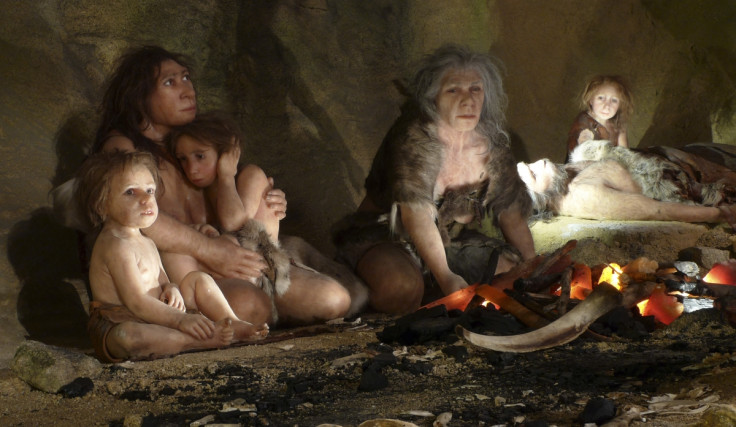Were French Neanderthals gastronomic cannibals?

French Neanderthals might have been "gastronomic cannibals", researchers have discovered, with fossil remains showing signs of bones being beaten and fractured shortly after death.
The remains, discovered in the Marillac site in the French region of Poitou-Charentes between 1967 and 180, belonged to a child aged between nine or 10, and two adults.
Scientists have now analysed the 57,600-year-old remains and found bone manipulations made very shortly after the individuals' death –concurrent with other Neanderthals sites.
The findings, published in the American Journal of Physical Anthropology, indicate that Neanderthals fractured the bones – but why they did this remains a mystery, with cannibalism or ritual suggested.
Lead author María Dolores Garralda said: "Some Neanderthal groups cut and tore apart child or adult corpses shortly after death (perimortem) using lytic instruments ... They might have been rituals --still in the 21st century these continue in certain parts of the world - or for food - gastronomic cannibalism or due to need."
The femur fragment from the child shows two large cut marks half a centimetre apart. Its state of preservation suggests the bone was fractured while fresh in a bid to separate the upper and lower extreme of the femur where the joints are located.
"Given the morphology of the fractures, it may be that the body of this child was manipulated shortly after death. The right leg received a series of blows that fractured the femur, and the cut marks identified are anthropic in nature; in other words, there is no visible evidence of animal bites," Garralda said.
The bones of the two adults also show similar markings. One has small fine marks made with flint tools after death. Researchers also point out that there is no evidence of cuts or carnivore teeth, as with other bones found at the Marillac site.
"These markings and deformations are clearly distinguishable from those studied in the three Neanderthal diaphysis," the authors wrote.
However, Garralda remains ambivalent about the cannibalism theory, as many animal bones were also found nearby, suggesting food was abundant: "To date we have been able to demonstrate these manipulations at several Neanderthal sites in Europe, which are of course much more recent, including in groups of contemporary humans, but we have not been able to demonstrate the consumption of human meat by Neanderthals (although this has indeed been done in other much more modern populations)."
The authors conclude: "The fact that some of these cut marks, percussion pits and fractures are similar to those seen on animal bones may suggest that human meat and marrow were consumed by Marillac Neanderthals in cannibalism.
"This interpretation should be considered carefully, given the large amount of faunal remains that are found in the same levels ... which probably indicate that there was no shortage of food or repeated famines.
"Of course, Marillac Neanderthals could have developed a non-starvation-induced (survival) cannibalism, which could have been funerary or gastronomic, without excluding the possibility that they could have been victims of aggressive exocannibalism, as suggested for some other sites."
© Copyright IBTimes 2025. All rights reserved.






















